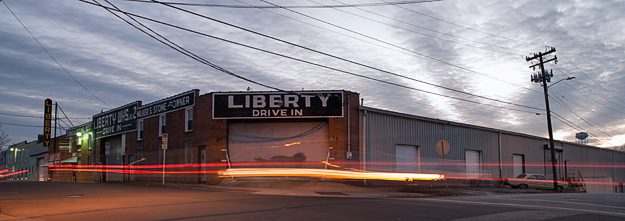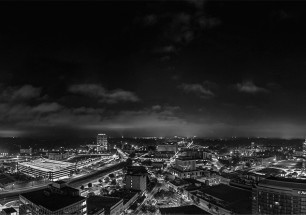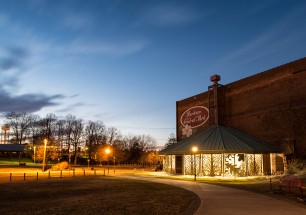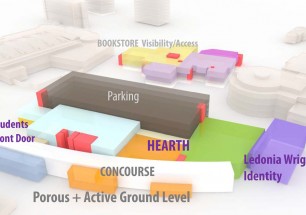Liberty, ad hoc / a priori

Doesn’t that just make you want to hang out by the warm light of the foundry?
If you live in or around Durham, you’ve probably heard something about the coming demolition of Durham’s last remaining tobacco auction warehouse, Liberty No. 2. For the history of the building and what’s now proposed, check out the entry over on opendurham.
For me, I’m disappointed. I’m not one to fall in with the militant preservationists, but I can’t say the new building will contribute as much to the context of the neighborhood as Liberty does. Or did, when Scrap Exchange and several other oddball entities were set up there.
When I moved to Durham a bit over 8 years ago, Downtown was just getting started, or at least that was my view of it as a newbie. The farmer’s market pavilion wasn’t in yet. Part of American Tobacco was done (and I got to help finish it), but it was still pretty common to be stopped on the street by some prospective Duke family who’d ask: “Where do people hang out?” or “Where can we get a bite to eat?” And I remember several of these encounters, even at a time when I’d gotten to know the area pretty well, where I struggled for an answer that worked for them.
But you could tell things were getting moving. After spending much of my undergraduate career in Michigan tying to figure out some sort of meaningful contribution to Detroit, at a time when absolutely nothing conventional worked, Durham had a refreshingly odd mix of conventional and unconventional conditions and strategies that seemed to be gathering momentum.
In the earliest days I was around, the central park area seemed to be lagging behind. Everyone knew it would take off sometime, and local developers started land grabbing everything they could get their hands on. The actual building and renovation of all that newly purchased property was slow going, kinda paused during the recession, but continually built steam along the way.
The Farmer’s Market. Park improvements. The renovation at the DBAP. Restaurants. Brewery. Food trucks. Music. Fitness. Green Building. BBQ.
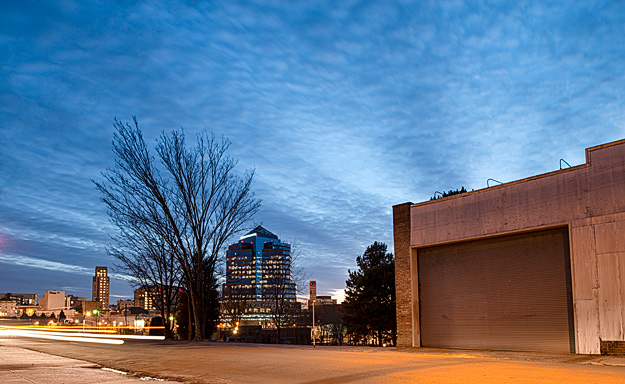
OK, I get it. Up a story or three that view would be pretty cool.
Liberty was always doomed in that context. It’s too big a parcel, in too good a location, for this to have played out in a way that adapted the whole of the building. It’s too valuable as a blank slate, or almost one anyway. It was obvious everyone knew this when Greenfire didn’t keep up with the maintenance that the tenants had been asking for, leading to the eventual collapse of the roof and the relocation of the tenants. Demolition by not-quite total neglect was pretty recognizable – it happened a lot in Detroit, if more brazenly. There, the developers would clean out the tenants and then leave the front door open for scrappers and the homeless population – something that would then help convince the city to declare the building a public hazard and have the taxpayers foot the demolition costs. Most of the time, that’s just how these things go – Let it rot and then it’s easier to convince people it needs to be torn down. It works, unfortunately, from a financial standpoint. I’d prefer to save the building and find some sort of creative use for it, but I get why the math looks bad. Or at least why the alternative math looks so much better.
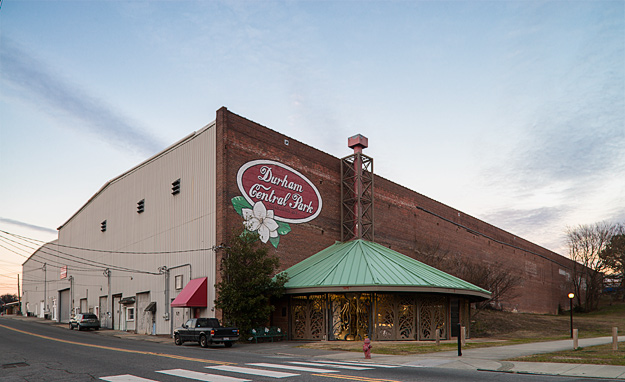
If you can’t come up with something awesome to do with that megawall…something’s wrong.
While I wish Liberty would stick around in some form, I have to say I’m less concerned about the preservation of the historic structure than I am about the neighborhood’s qualities. Even ignoring the (very valid) argument that this is the last remaining example of a significant typology, the character of Liberty Warehouse has been part of Durham Central Park’s, and Durham’s, identity for a really long time. If there’s one defining characteristic of the Central Park area, it isn’t historic in the usual sense – it’s do-anything-as-long-as-it-works. I’ve heard the term ‘DIY District’ probably a little more than I would like to. It’s a little kooky, definitely ad hoc, and it marks the area as something uncommon, creative-minded, and special.
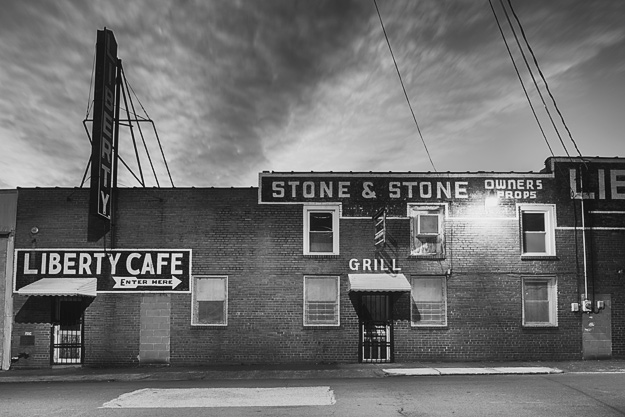
Context? Naw. Just a few ‘brick signage elements’
Liberty added to that, and really well when it still had tenants. If the new building could contribute something significant to that dialog, which is key to what makes the central park district appealing in the first place, I’m all in. This is where I often separate with many in the historic preservation crowd – By limiting the focus to quibbling about ‘brick signage elements’, and ‘preserving the memory’ of the warehouse, the forest gets lost in the trees, and allows the developer to claim they’re doing something they’re really not. They’re not preserving, or even ‘memorializing,’ anything of the historic character of the building (‘history walk’? You’ve got to be kidding me), and more importantly, they’re not engaging in the neighborhood conversation – old, new, or otherwise.
 Wait. Where are we? 440 is around here somewhere. via Preservation Durham (pdf)
Wait. Where are we? 440 is around here somewhere. via Preservation Durham (pdf)
The proposed building is density without the language of density – an urbanism for suburbanites, set in an area with a predominantly industrial, ad hoc feel. It salvages a few pieces of the industrial past but treats them as a nuisance to be juggled or worked around rather than context to be played off of. Wedged into one of the best spots, on one of the most unique sites in Durham, we get the same soulless suburban kit of parts you’d find any in place that just completely didn’t care.
By hamfistedly incorporating some of the historic stuff into the new building, the developer is missing out on the opportunity Liberty no. 2 presents. It’s the oldest trope in the architectural handbook – constraints and difficult context get catalyzed into something that becomes a hook; a draw; one of the unique reasons somebody wants to come live there, or start a restaurant there. Hey. What’s up with that building? Oh. Cool.
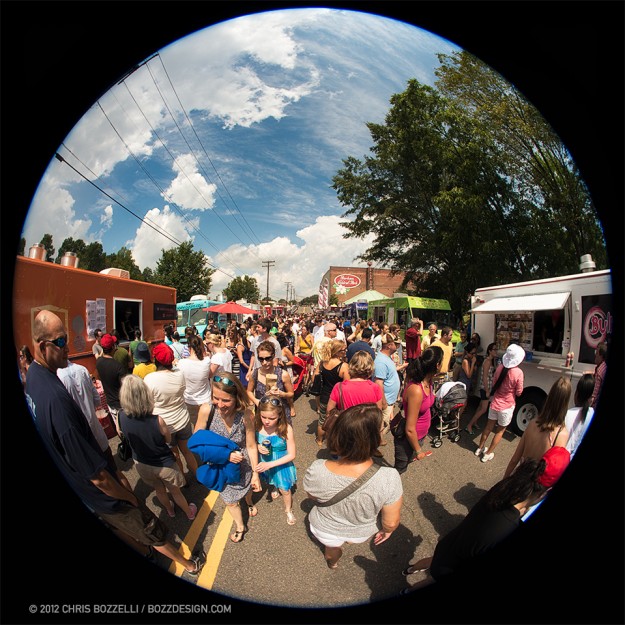
Going to be a bit different feel, no?
A blank-slate solution (which is what the developer seems to actually want) could work out equally well for the neighborhood. Finding good examples of site-specific multifamily new buildings in industrial districts isn’t particularly difficult, though here in the triangle we’re a bit behind the times. It’s a loaded enough site that even without the remnants of liberty Warehouse there are a lot of work-the-fabric opportunities. DAP at one corner, Farmer’s Market Pavilion and shops at another, Rigsbee life at another. Two bordering streets are the arteries between the district and downtown proper. But somehow the developer doesn’t seem interested in, or even aware of, any of it. We have a recipe, thank you, it’s worked everywhere else, that’s how we’ll do it here.
Call it a massive opportunity lost; the possibility of something unique and special tossed aside for plain white toast, no crust.
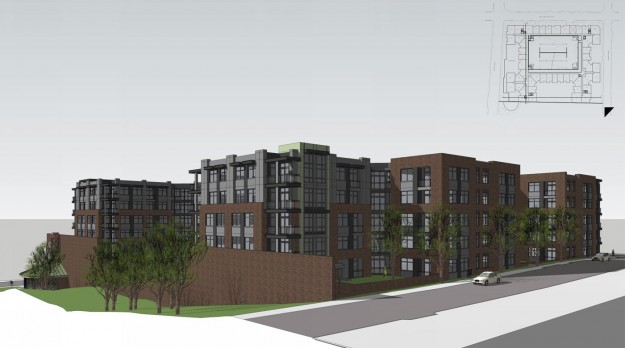 Urbanism 101: Don’t do this. via Preservation Durham (pdf)
Urbanism 101: Don’t do this. via Preservation Durham (pdf)
In those early days I lived in Durham, if you wanted to be successful, you had to be good – really good. Not many places had the foot traffic to support a new restaurant or business without that place being something of a draw on it’s own. The easily-forgotten past is littered with businesses and ideas that were perfectly passable but still went belly-up in a few months. We’re beyond that now, obviously, but can we ask that in exchange for losing Liberty Warehouse, we get something that’s part of the dialog, rather than a half-hearted sneer at what’s made the area desirable enough to attract this kind of development in the first place?

